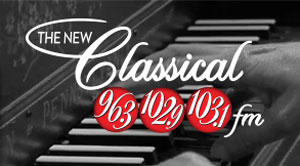Get Smart & My Winnipeg
by Marc Glassman.
Get Smart Peter Segal, dir; Tom J. Astle & Matt Ember, script based on characters and concepts by Mel Brooks & Buck Henry. Starring: Steve Carell (Maxwell Smart, Agent 86), Anne Hathaway (Agent 99), Alan Arkin (The Chief), Terrence Stamp (Siegfried), Dwayne “The Rock” Johnson (Agent 23), Masi Oka (Bruce), Nate Torrence (Lloyd), James Caan (the President), Bill Murray (Agent 13), Patrick Warburton (Hymie)
My Winnipeg Directed, scripted and narrated by Guy Maddin
Get Smart
We live in an age of recycled culture. In the past, it was simple: artists thought—or pretended–that they were creating something original except for some canny ones who made it clear that they were raiding classics for references and inspiration. Godard famously ransacked film, philosophy and literature in his French “new wave” hits of the ‘60s. That, of course, was considered to be high culture. Now, pop producers mash jazz with soul music, add electronica and African percussionists, and turn the result into hugely successful industrial dance tracks. Or they take an old TV show, add in a current comedy star, a rising ingénue, a commercially reborn character actor and a slightly on the skids B movie action hero, stir quickly, and call it “Blockbuster Material.”
Our Blockbuster du jour is Get Smart, which takes the ‘60s TV hit, itself a parody of the then hot spy genre, and turns it into a Steve Carell vehicle. Carell, who was three when the show debuted in 1965, is a perfect fit for Don Adams, the original Maxwell Smart, and the comic star of the series. Both Carell and Adams are fine at playing the Everyman, American-style: buttoned down, clean, neurotic, physically maladroit, romantic and optimistic to the point of absurdity. Harold Lloyd perfected the character in the Roaring Twenties, in silent era classics like Safety Last and Speedy. Forty years later, Adams replicated him—as had Bob Hope, Jerry Lewis, Jack Lemmon among others—and, now, 40 more years later (!), Carell is keeping the tradition alive.
His main cast members are well chosen. Replacing the TV series’ Barbara Feldon, who was Smart’s romantic foil Agent 99, is another cool brunette with a sly smile, Anne Hathaway. The Chief, originally played by the fine character actor Ed Platt is actually bettered by the brilliantly quirky Alan Arkin, who pushes his part into a new version of his angry-old-man schtick. Far better than the TV villain Siegfried, then played by Bernie Koppel, is the uber-tough Terence Stamp. In fact, Stamp (The Collector, Billy Budd) and Arkin (The Russians are Coming, The Russians are Coming) were stars in the ‘60s during the TV series’ heyday, a nice touch.
Get Smart, for those too young to remember it, was created by Mel Brooks and Buck Henry, two of the most inventive writers of the ‘60s. Brooks went on to make The Producers, latterly a Broadway smash, Blazing Saddles and a host of hit comedy features while Henry co-wrote The Graduate, acted in The Man who Fell to Earth and acted and co-directed Warren Beatty’s big hit Heaven Can Wait. The duo came up with lots of great gimmicks for Smart, including a shoe phone—the precursor of the cell but a lot more awkward—and a unique way of entering his spy lair, through a secret elevator in a phone booth. (You don’t see many phone booths anymore—except in this movie!)
Along with Don Adams, Henry and Brooks came up with a set of lines that were used throughout the show. “Would you believe” was the biggest; it became a cult favourite. The joke—employed over and over again—would involve Smart saying something outrageous. “Would you believe that 50 Hell’s Angels are just outside ready to back me up?” The inevitable reply would be: “No.” “Well, would you believe 30 angry baseball players?” “No.” “Well, would you believe one annoyed girl scout?”
Ah, nostalgia! So, what about the film, good casting aside? Get Smart is pretty funny and the chemistry between Carell and Hathaway at least simmers, if not sizzles. And a parody of the Catherine Zeta Jones/Sean Connery laser beam choreography scene from Entrapment is funny and sexy. But is it sharp and innovative? No. The film is formulaic. It’s less a parody of the spy-action genre than a reprise of it.
“Hey, dude, lighten up—it’s the summer” seems to be the message from this film’s writers and director.
Get Smart could be smarter. But if you want to spend a couple of nice hours in an air-conditioned theatre, would you believe you could do worse?
My Winnipeg
If this was the best of all possible worlds, as Leibniz once put it, then how come millions of dollars will be spent on seeing Get Smart this weekend while My Winnipeg will be lucky to make a couple of thousand?
It’s not that I hate Get Smart—in fact, it’s likeable—but the film is an industrial commodity, produced by the Hollywood hit making machine. My Winnipeg is the exact opposite: poetic, charming, crazy and personal. Guy Maddin made My Winnipeg about his hometown, which he loves and hates. He didn’t make the film to cash in; it’s laughable to even consider the notion. No, he created this fevered dream of a documentary to excise the demon of his overly rooted childhood from his psyche—and he’s invited us along for the ride.
In twenty five years, the happy few, as Goethe once called them (or should I say “us”), will be still be viewing My Winnipeg with pleasure, trying to parse out which parts of this supposed doc are true and which ones are created by Maddin. We’ll still be looking with wonder at images of Winnipeg’s past: horses frozen in the Red River, the old Winnipeg hockey arena in its last pristine moments before it was demolished, taxi cabs driving through snow bound back alleys in the dead of winter.
We’ll be replaying Maddin’s oddly metred cadence as he recites his version of Winnipeg’s history. It’s a version that, of course, must be questioned. Was there really an “if day” staged during World War Two, where people playing Nazis took over the city’s downtown, scaring the citizenry? Did Winnipeg actually have a three story public pool, the top for communal swimming, the middle just for girls and the basement reserved for boys? Was the Happyland amusement park actually demolished by buffalos?
The answer to most of these questions is a qualified “yes,” except for those marauding bison.
Maddin’s film moves us because ultimately it’s about trying to escape one’s past. The filmmaker tells us, over and over, that he wants to leave Winnipeg. But he can’t. Memories pull him back. Maddin gives us a Winnipeg of somnambulists out of Dr. Caligari. These dream walkers wander through the dark in the snowy town, equipped with keys that still work for doors in houses they departed ages ago. Back alleys form a grid creating a secondary world of neighbours and homes outside of the official maps. There, the poets reside, trying to wrest themselves out of sleep and rouse themselves to do something: Leave.
In Maddin’s strangest conceit, he hires actors to play his family, renting his old home as a set for this film. Ann Savage, the B movie actress most famous for the noir cult classic Detour, plays his mother. His long dead father, represented rather cruelly by a large lump in the living room’s rug, is more sweetly remembered in an extended sequence about hockey. (Maddin’s father was the manager of the Canadian national team in the ‘50s.) The rest of the family, including a deceased brother and Maddin’s athletic sister are seen watching a black and white TV set, turned on to the CBC. Oh, Canada.
My Winnipeg deservedly won the best Canadian film award at last year’s Toronto International Film Festival. As this isn’t the best of all possible worlds—you’ve heard it here; Voltaire was right!—run to your local cinema and see this beautiful film this weekend. You will never see its like again.











